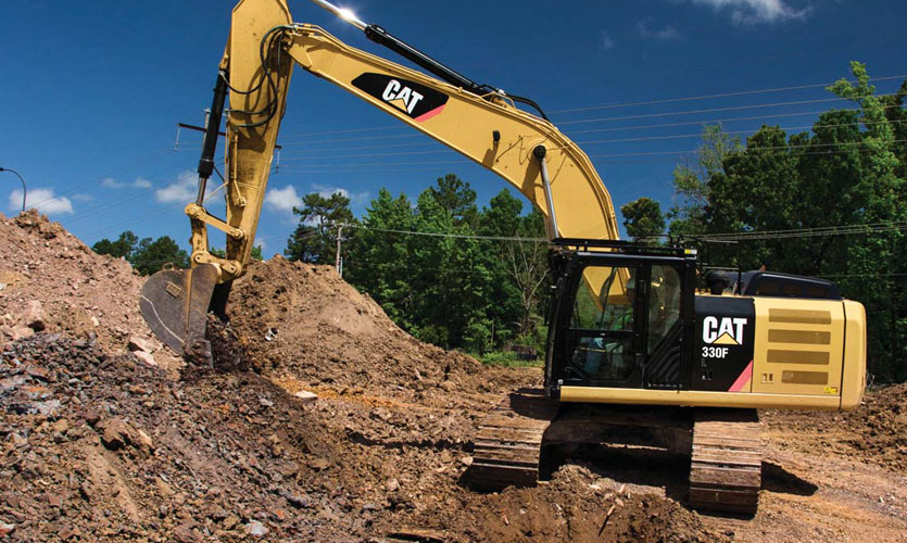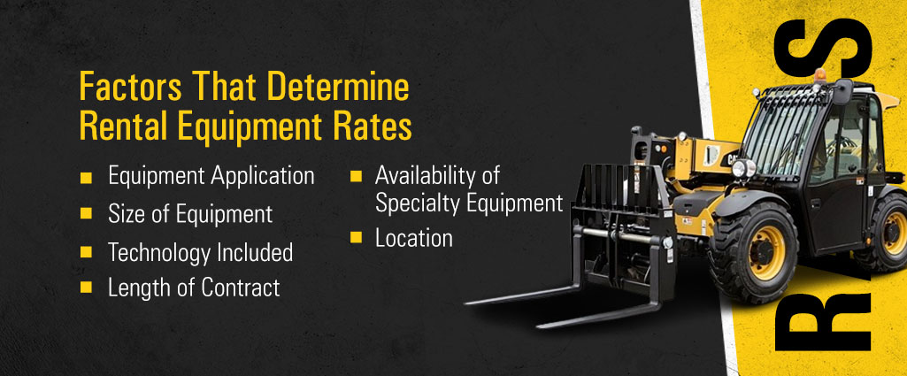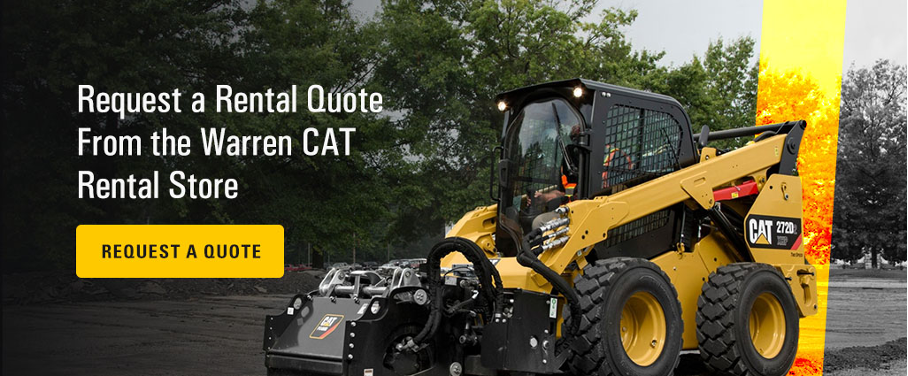A Guide to Heavy Equipment Rental Costs
 July 15, 2024
July 15, 2024
Equipment rentals provide flexibility for construction businesses and contractors. You can use the exact equipment models you need, when you need them, without purchasing, creating more financial flexibility each month. This ease lets you stay on track with project schedules while maintaining your typical monthly expenses.
Understanding heavy equipment rental costs helps you plan for project expenses. Rental costs vary by equipment type, size and other factors, so it’s important to research prices and see how they fit into your available budget. Learn more about how much it costs to rent heavy equipment with our guide.
Cost by Rental Equipment Type
Certain types of equipment can cost more than others, depending on their specifications — the cost to rent a backhoe is different than the cost to rent an excavator. Construction sites typically rent equipment by the day, week or month. Breaking down average prices by rental types helps you anticipate your costs. Most rental providers offer free quotes to help you evaluate the cost before you commit to a rental. Here are typical prices for four major heavy equipment options:
1. Excavators
Excavators are one of the most popular equipment types, meeting many digging applications, from digging trenches to demolition jobs. They vary widely in size, from compact to large sizes. Excavators can complete earthmoving tasks quickly, aiding with site efficiency and meeting deadlines. An excavator may be able to complete site tasks within a few hours or days, making a rental agreement a great option.
Exact rental prices depend on the excavator’s size and capabilities. Daily rental rates can range from $450 to more than $3,000, with the largest heavy-duty options toward the top end of the scale. It often costs less to rent a mini excavator because of its compact size. In contrast, the purchase price of a new standard-size excavator can cost between $200,000 and $600,000.
2. Skid Steer Loaders
Skid steer loaders are versatile compact machines that can clear and move soil, along with many other functions available through a wide variety of attachments. It costs between $200 and $400 per day to rent a skid steer. Additional attachments like buckets, augers, grapples or brooms can increase rental costs.
3. Telehandlers
Telehandlers are lifting machines that carry and transport heavy materials across construction sites. They are available in many sizes, load capacities and boom heights. These factors impact their rental or purchase prices, with larger machines typically costing more than more compact options. Telehandler rentals start at $300 per day for smaller models and go up to $500 for more larger options.
4. Aerial Lifts
Aerial lifts provide an airborne platform workers use to reach higher elevations and perform tasks safely. Whether your crew needs to construct a high-rise apartment complex, perform HVAC repairs or pick items in a warehouse, aerial lifts can help you get the job done. Daily rental prices for aerial lifts can range between $250 and $700, depending on the brand and specifications.
Factors That Determine Rental Equipment Rates
By understanding the factors that influence equipment rental costs, you can make better budget projections and decisions. These are other considerations for your heavy equipment rental prices:

1. Equipment Application
It’s important to map out your project needs and goals before selecting rental equipment. Consider your project goals and what types of equipment are necessary to complete them. Bigger projects might need higher numbers or more specific equipment types to address every project requirement. In contrast, smaller projects might use more compact machines or fewer numbers to complete.
For instance, residential projects usually need smaller machine types for more precision in smaller lots. Landscaping applications require smaller and gentler handling to rearrange the earth, while trench digging needs more heavy-duty equipment.
2. Size of Equipment
As mentioned, the equipment’s size has a significant impact on rental prices. Construction sites must find the best machine sizes to meet their job needs. Equipment that’s too small can impede efficiency, making you work longer hours and placing more strain on the machines. However, equipment that is too large can make handling more challenging and drive up fuel costs. You can work with a rental provider to find the best size for your site needs, maximizing the rental cost and benefit.
3. Technology Included
Modern models of rental equipment might also feature various forms of technology like site positioning. These additions can boost accuracy and efficiency, providing you with valuable options you can use to increase productivity. You can research available technology or ask a rental provider about advanced options and their price ranges.
4. Length of Contract
Rental agreements cover specific durations, including hourly, daily, weekly and monthly options. Generally, longer terms offer lower per-hour rental rates, but you don’t want to rent a machine longer than necessary. You should contact a rental provider to discuss contract lengths and terms. They can offer more insights into prices and options that could meet your project requirements.
5. Availability of Specialty Equipment
Certain equipment models include special features that can raise rental prices. For projects that need specialized attachments or have heavy power demands, you might encounter difficulty finding the equipment you need. Certain specialty models might be difficult to find, which also increases their price. Only a few providers might have the exact model you need, and they might only have a few in their inventory. That’s why it’s important to find a dealer that has a robust inventory where you can find all the parts and equipment you need.
You can expect higher prices during the busiest times of the year, while you might find lower rates in the off-season — usually in the winter.
6. Location
Your location also plays a big role in ultimate rental costs. Each state varies with business taxes, wage levels, supply costs and other essential fees. The higher these fees are, the more expensive it becomes to loan out equipment, which is reflected in rental fees.
Rental providers typically set prices based on local competition and overall business costs. Project locations in one part of the country could manage completely different prices from another part.
You should also consider your proximity to rental suppliers. Transporting equipment to your work site is a part of your rental costs, so renting from the nearest reputable dealer is typically beneficial. You can request equipment delivery directly to your job site, or you can consider the cost of transporting the equipment yourself.
Request a Rental Quote From the Warren CAT Rental Store
Understanding average rental costs helps you make the most informed decision for your project and team. At the Warren CAT Rental Store, we understand the importance of transparent rental prices. We offer a wide range of heavy equipment rentals, from excavators to power generation units. Our expert customer service, high-quality machinery and fleet size and variety set us apart as a perfect partner.
To get started with an equipment rental, request a quote from the Warren CAT Rental Store today.

